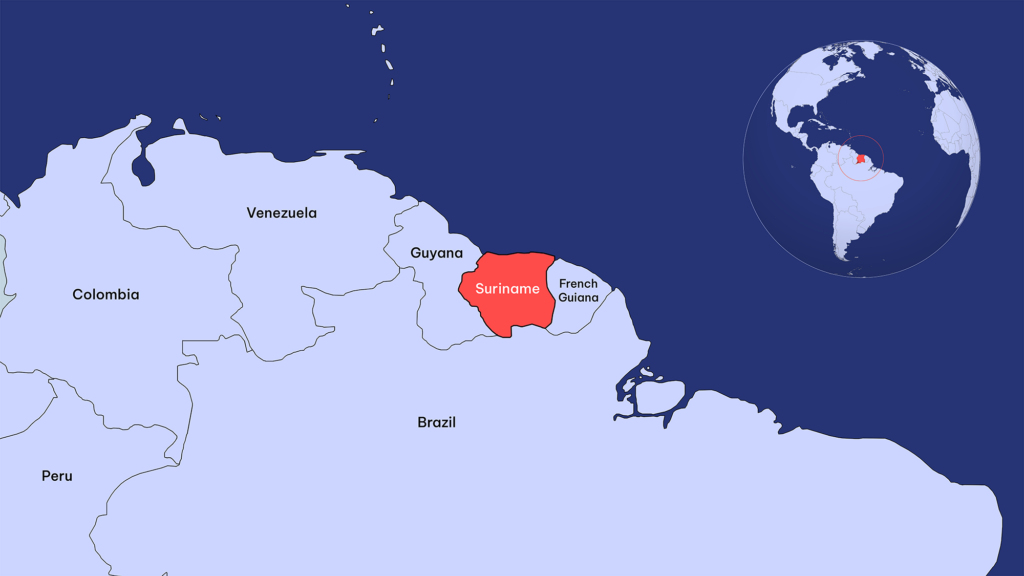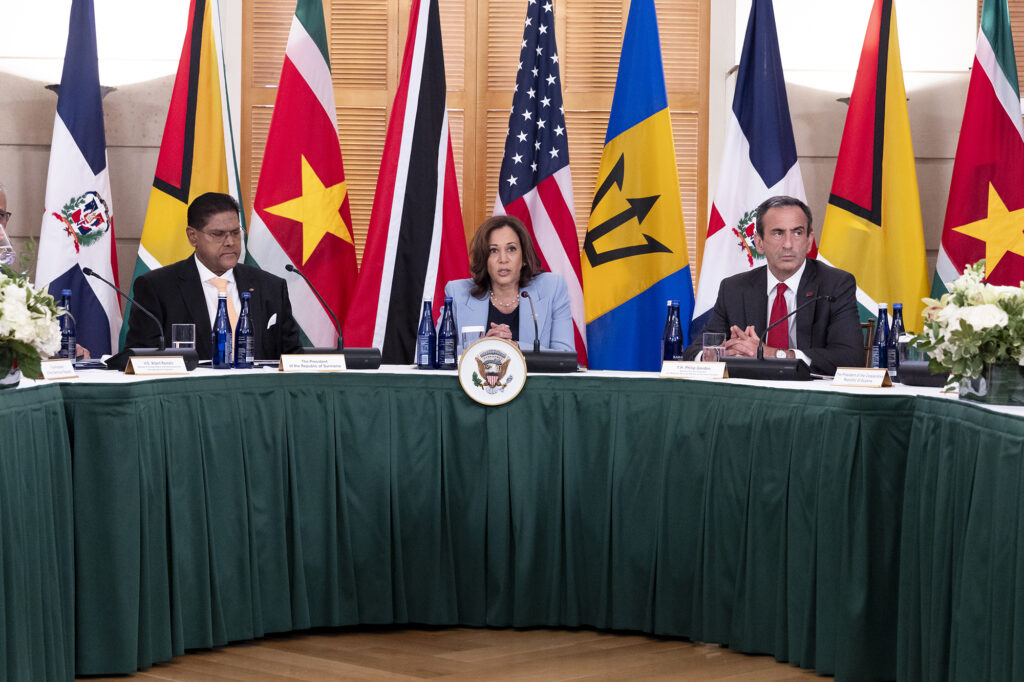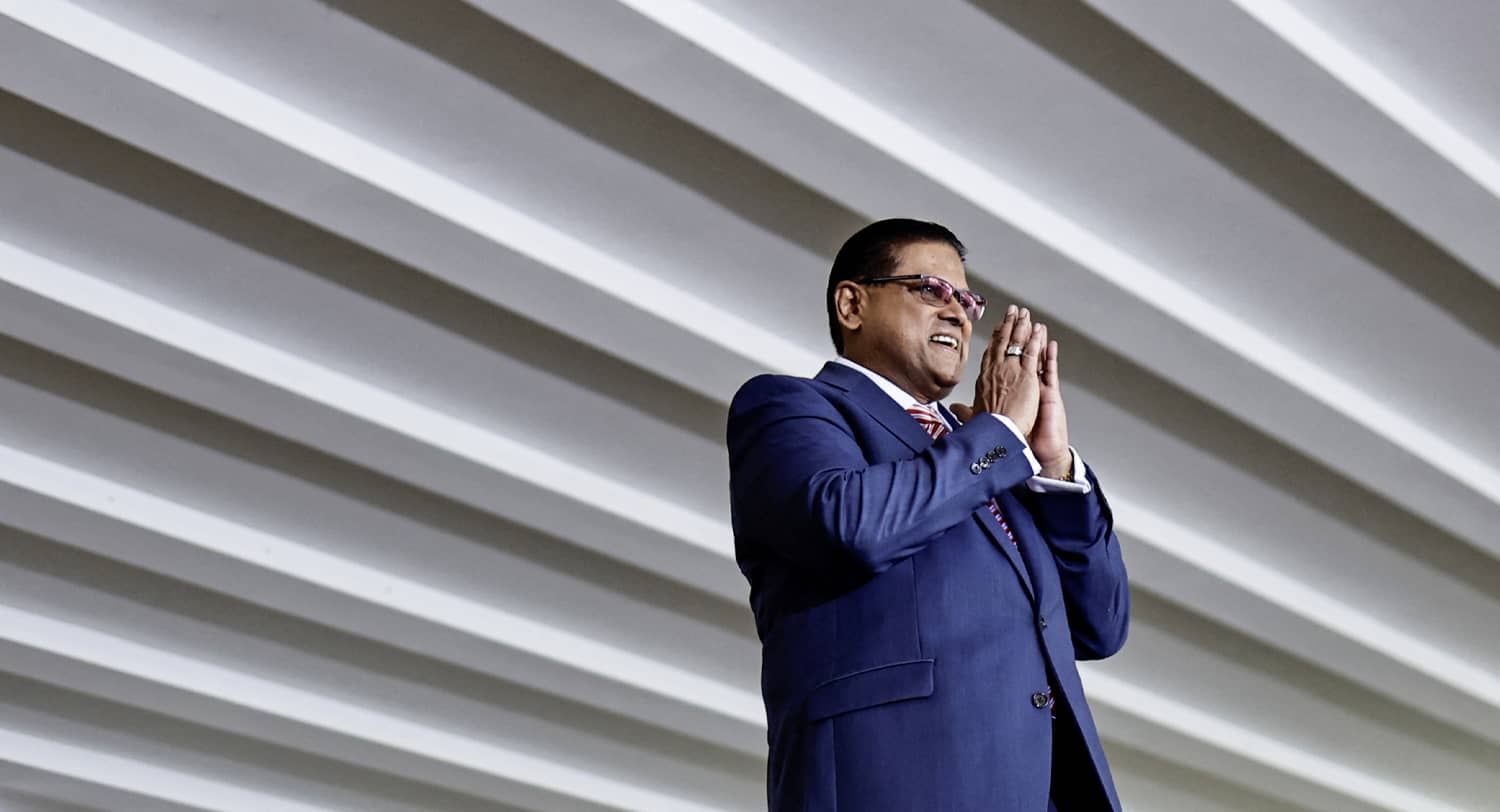Suriname, a small, resource-rich country with a population of 600,000, faces a consequential election in May 2025, when its current president, Chan Santokhi, seeks re-election. Owing to limited polling data, the outcome remains uncertain. But these elections will be pivotal for the country’s economic reform agenda and oil prospects and thus its economic future, as highlighted by the U.S. Department of State.
Suriname is bordered by Guyana to the West, French Guiana to the East, and Brazil to the south, with limited aviation links to the US. It’s a multi-ethnic society with 27 percent of South Asian descent and 22 percent of African descent. A Chinese-Surinamese community has existed for over 150 years. While Suriname has traditionally identified with the Caribbean, it has recently made moves to position itself as both a South American and broader Western continental actor. The government also cultivates relationships with countries linked to Surinamese diaspora communities, including China.

Suriname was a Dutch colony for 300 years, from 1667 until gaining independence from the Netherlands in 1975, and shares an unusual historical link with New York. In the 17th century, the Treaty of Breda between Britain and the Netherlands resulted in Britain taking New Amsterdam (modern-day New York City) while the Netherlands retained control of Suriname.
Post-independence, Suriname experienced prolonged political instability, including a military dictatorship under Desi Bouterse. Corrupt governments have historically undermined the rule of law and economic policymaking, but the current reformist administration has sought to break with Suriname’s past. The current government’s ambitious economic reforms, aimed at reconstructing fiscal stability, debt restructuring, and enhancing social protections among other goals, has driven growth and lowered inflation. However, these reforms have been “politically challenging” with the removal of fuel, electricity, and water subsidies resulting in political costs.
The stakes are high in the 2025 elections. President Santokhi and his Progressive Reform Party have undertaken a number of difficult reforms. Santokhi has sought deeper ties with South America, the United States and Europe. Former President Bouterse’s National Democratic Party, historically a party of the left but more recently center-left, if elected, would likely return to the economically populist policies of the past and would likely give Suriname’s foreign policy a more pro-China orientation.
The US has had an on-and-off engagement with Suriname. During World War II, thousands of American soldiers were stationed in country to protect its strategic resources. Throughout much of the twentieth century, Suriname’s economy was dominated by bauxite, a key raw material used in the production of aluminum. Bauxite was critical to the war effort as it was used to manufacture a range of military equipment from tanks, to ships, and weapons. The Allies, including the U.S., sent troops to Suriname to protect the bauxite industry as Suriname shares a border with French Guiana (then part of Vichy France controlled by Nazi Germany). These troops expanded and developed what is now Johan Adolf Pengel International Airport in Paramaribo, Suriname’s capital, to serve as a key transport base for sending Lend-Lease supplies. Today, it remains Suriname’s largest international airport and a reminder of the country’s wartime significance as a staging ground for Allied materials.

Suriname is one of only eight countries globally classified as a net carbon sink, with 93 percent of its landmass covered by forests. Paradoxically, the country recently discovered numerous significant oil and gas reserves off its coast. TotalEnergies estimates offshore reserves to yield 200,000 barrels per day by 2028, with informal estimates from other sources reaching more than 500,000 within 10 years. This compares with the oil production levels of Venezuela (783,000) and French Guiana (650,000 bpd). Staatsolie’s Managing Director, Annand Jagesar, estimates that Suriname could earn between $16 billion and $26 billion from its oil industry, doubling or even tripling its gross domestic product and long-term economic prospects.
While Suriname’s classification as an upper-middle income country and its oil wealth complicates US foreign assistance, the country would like “more of the United States” and there are opportunities for collaboration. US agencies like the Export-Import Bank, the Trade and Development Agency, and the Development Finance Corporation should be deployed to support Suriname’s growing economy. Such collaboration would strengthen the reform agenda which is critical to the stability of a country on the verge of an oil boom.
Given Suriname’s projected oil wealth, there will be increased global interest in the country. An immediate need is more flights between the United States and Suriname to accommodate the country’s anticipated economic surge.

